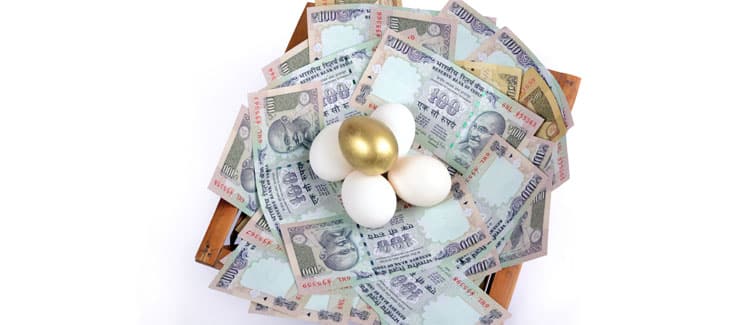New Tax Regime Vs Old Tax Regime for FY 2025-26 (AY 2026-27)
The Union Budget 2025 has brought significant updates to India's tax structure, making it crucial for taxpayers to decide between the new tax regime vs old tax regime. Both offer different benefits, deductions, and tax slabs. In this article, we will explain the key changes for FY 2025-26 (AY 2026-27) and help you choose the tax regime that best suits your financial situation.
2025 Budget Updates
-
Zero Tax Up to ₹12.75 Lakh (Salaried Under New Regime)
For salaried individuals under the new tax regime, the basic exemption limit has been raised to ₹12 lakh. With a ₹75,000 standard deduction, income up to ₹12.75 lakh is effectively tax-free.
-
New Income Tax Slab Rates for FY 2025-26 (AY 2026-27)
The new tax regime now has seven income tax slabs:
- Up to ₹4,00,000: NIL
- ₹4,00,001 - ₹8,00,000: 5%
- ₹8,00,001 - ₹12,00,000: 10%
- ₹12,00,001 - ₹16,00,000: 15%
- ₹16,00,001 - ₹20,00,000: 20%
- ₹20,00,001 - ₹24,00,000: 25%
- Above ₹24,00,000: 30%
-
Old Income Tax Slabs for FY 2025-26 (AY 2026-27)
The old tax regime retains its standard slabs:
Up to ₹2.5 lakh: NIL
₹2.5 lakh - ₹5 lakh: 5%
₹5 lakh - ₹10 lakh: 20%
Above ₹10 lakh: 30%
-
Minimal Deductions in the New Regime
The new regime eliminates most exemptions and deductions (e.g., HRA, LTA, Section 80C, and Section 80D), with the primary benefit being the ₹75,000 standard deduction for salaried individuals.
-
Rebate Under Section 87A
The rebate under Section 87A has increased to ₹60,000 in the new regime (from ₹25,000), making the tax liability for income up to ₹12 lakh effectively zero. However, the rebate does not apply to income taxable under special rates, like capital gains.
-
Marginal Relief and Upcoming Changes
Marginal relief on rebates remains applicable, and the new tax regime for FY 2025-26 (AY 2026-27) is part of the existing Income Tax Act. The new Income Tax Bill, once passed, will become the new Act from April 2026.
About the New Tax Regime
The Government of India introduced the new tax regime under Section 115BAC of the Income Tax Act, 1961, in the Union Budget 2020. It came into effect from 1 April 2020 (FY 2020-21) for individuals, businesses, and Hindu Undivided Families (HUFs). The Union Budget 2025-26 has now introduced streamlined tax slabs under this regime, replacing the previous structure introduced in the Union Budget 2023.
Note: The new tax structure announced in Budget 2025 supersedes the one from Budget 2023 under Section 115BAC of the Income Tax Act.
Key Features of the New Tax Regime:
- Default Tax Regime: The new tax regime is the default for individuals without business income. However, you can choose to switch to the old tax regime if preferred.
- Basic Exemption Limit: The exemption limit is now ₹4 lakh, up from ₹3 lakh, providing a benefit for all taxpayers.
- Tax Rebate: Taxable income up to ₹12 lakh is exempt from tax, thanks to the rebate under Section 87A.
- Standard Deduction: Salaried individuals can avail a standard deduction of ₹75,000, making income up to ₹12.75 lakh tax-free.
- Simplified Tax Slabs: The new regime offers seven tax slabs, with rates ranging from 0% to 30%
Income Tax Slabs (in Rs.) Income Tax Rates (in % p.a.) Up to ₹4 lakh Nil Above ₹4 lakh - ₹8 lakh 5% Above ₹8 lakh - ₹12 lakh 10% Above ₹12 lakh - ₹16 lakh 15% Above ₹16 lakh - ₹20 lakh 20% Above ₹20 lakh - ₹24 lakh 25% More than ₹24 lakh 30% - Minimal Deductions: Traditional deductions like HRA, LTA, and Section 80C are not available under the new regime.
- Simplified Compliance: With fewer documents required, the tax filing process is easier and more straightforward.
About the Old Tax Regime
The old tax regime, which was in effect before the introduction of the new tax regime in the Union Budget 2020, featured five tax slab rates for individual taxpayers: 0% for income up to ₹2.5 lakh, 5% for income between ₹2.5 lakh and ₹5 lakh, 20% for income between ₹5 lakh and ₹10 lakh, and 30% for income above ₹10 lakh.
This revision specifies the income ranges along with the respective tax rates clearly and concisely, based on the old tax slabs applicable before the new regime was introduced
Key Features of the Old Tax Regime:
- Old Regime Tax Slabs: The old regime retains its traditional slabs for FY 2025-26. The following table shows the income tax slabs in India for the old regime:
Income Slab (in Rs.) General Citizen Senior Citizen (60 years or above) Super Senior Citizen (80 years or above) ₹0 - ₹2,50,000 No Tax No Tax No Tax ₹2,50,001 - ₹3,00,000 5% No Tax No Tax ₹3,00,000 - ₹5,00,000 5% 5% No Tax ₹5,00,001 - ₹10,00,000 20% 20% 20% Above ₹10,00,000 30% 30% 30% - More Tax Deductions and Exemptions: Under the old tax regime, you have access to over 70 exemptions and deductions, including Section 80C, Section 10(10D), HRA and LTA. This enables you to lower your taxable income and reduce your tax obligations.
- LTCG Benefits: The old tax slab regime provides Long-Term Capital Gains (LTCG) benefits on your investments in debt funds.
- Standard Deduction: ₹50,000 for salaried individuals.
- Compliance and Documentation: Requires maintaining extensive documentation for exemptions and deductions.
- Ideal For: Suitable for taxpayers with significant investments or deductions, as these can reduce taxable income substantially.
- Senior Citizen Benefits: Higher exemption limits apply for senior citizens aged between 60 and 80 years (up to ₹3 lakh) and above 80 years (up to ₹5 lakh).
Which Tax Regime is Better: New Tax Regime vs Old Tax Regime in FY 2025-26 (AY 2026-27)
Deciding between the new tax regime vs the old one depends on a comparative analysis of the overall benefits from different tax slab rates and deductions available for you under both tax regimes.
To make it easier, we have compared old and new tax regimes based on various parameters in the following sections.
To make it easier, we have compared old and new tax regimes based on various parameters in the following sections.
Income Tax Slab for Old Regime vs New Tax Regime
|
Old Tax Regime for FY 2025-26 (AY 2026-27) |
New Tax Regime for FY 2025-26 (AY 2026-27) |
||||
| Income Slab (in Rs.) | General Citizen | Senior Citizen (60 years or above) | Super Senior Citizen (80 years or above) | Tax Slab for FY 2025-26 | Tax Slab |
| ₹0 - ₹2,50,000 | No Tax | No Tax | No Tax | 0 - ₹4,00,000 | No Tax |
| ₹2,50,001 - ₹3,00,000 | 5% | No Tax | No Tax | ₹4,00,001 - ₹8,00,000 | 5% |
| ₹3,00,000 - ₹5,00,000 | 5% | 5% | No Tax | ₹8,00,001 - ₹12,00,000 | 10% |
| ₹5,00,001 - ₹10,00,000 | 20% | 20% | 20% | ₹12,00,001 - ₹16,00,000 | 15% |
| Above ₹10,00,000 | 30% | 30% | 30% | ₹16,00,001 - ₹20,00,000 | 20% |
| – | – | – | – | ₹20,00,001 - ₹24,00,000 | 25% |
| – | – | – | – | ₹24,00,001 and Above | 30% |
Surcharge Rates for Old vs New Tax Regime (FY 2025-26)
| Annual Taxable Income | Additional Surcharge Rate for Old Tax Regime for FY 2025-26 (in % p.a.) | Additional Surcharge Rate for New Tax Regime for FY 2025-26 (in % p.a.) |
| Above Rs. 50 lakhs – Rs. 1 crore | 10% | 10% |
| Above Rs. 1 crore – Rs. 2 crores | 15% | 15% |
| Above Rs. 2 crores – Rs. 5 crores | 25% | 25% |
| Above Rs. 5 crores | 37% | 25% |
Illustration of the Old vs New Tax Regime Comparison
Let us assume the following details of income and investments for two individuals:
| Particulars for FY 2025-26 | Taxpayer X (Amount in Rs.) | Taxpayer Y (Amount in Rs.) |
| Income from Salary | Rs. 20 lakhs | Rs. 15 lakhs |
| HRA | Rs. 1.5 lakhs | Rs. 1.5 lakhs |
| LTA | Rs. 50,000 | Rs. 50,000 |
| Deductions u/s 80C | Rs. 1.5 lakhs | Rs. 1.5 lakhs |
| Deduction under Section 80CCD(1B) for NPS | R̥s. 50,000 | R̥s. 50,000 |
New vs Old Tax Regime - Which Regime is Best for Tax Saving for Taxpayer X?
| Particulars | Old Tax Regime (in Rs.) | New Tax Regime (in Rs.) |
| Income from Salary | Rs. 20 lakhs | Rs. 20 lakhs |
| (-) Exemption for HRA | Rs. 1.5 lakhs | NA |
| (-) Exemption for LTA | Rs. 50,000 | NA |
| (-) Standard Deduction | Rs. 50,000 | Rs. 75,000 |
| (-) Deduction under Section 80C for PF | Rs. 1.5 lakhs | NA |
| (-) Deduction under Section 80CCD(1B) for NPS | R̥s. 50,000 | NA |
| Net taxable income | Rs. 15.5 lakhs | Rs. 19.25 lakhs |
|
Use Income Tax Calculator to Estimate Payable Tax |
||
| Calculated Tax | Rs. 2,77,500 | Rs. 1,85,000 |
| Health & Education Cess | Rs. 11,100 | Rs. 7,400 |
| Chargeable Income Tax | Rs. 2.88 lakhs | Rs. 1.92 lakhs |
Old Scheme vs New Scheme - Which Tax Regime is Better for Taxpayer Y?
| Particulars | Old Tax Regime (in Rs.) | New Tax Regime (in Rs.) |
| Income from Salary | Rs. 15 lakhs | Rs. 15 lakhs |
| (-) Standard Deduction | Rs. 50,000 | Rs. 75,000 |
| (-) Exemption for HRA | Rs. 1.5 lakhs | NA |
| (-) Exemption for LTA | Rs. 50,000 | NA |
| (-) Deduction under Section 80C for PF | Rs. 1.5 lakhs | NA |
| (-) Deduction under Section 80CCD(1B) for NPS | R̥s. 50,000 | NA |
| Net taxable income | Rs. 10.5 lakhs | Rs. 14.25 lakhs |
|
Use Income Tax Calculator to Estimate Payable Tax |
||
| Calculated Tax | Rs. 1,27,500 | Rs. 93,750 |
| Health & Education Cess | Rs. 5,100 | Rs. 3,750 |
| Chargeable Income Tax | Rs. 1.32 lakhs | Rs. 97,500 |
Deductions/ Exemptions under Old vs New Tax Regime (AY 2025-26)
The tax deductions and exemptions under the old regime and new tax regime for FY 2025-26 are as follows:
| Income Tax Deductions/ Exemptions | Details | Old Tax Regime | New Tax Regime (Applicable from 1 April 2025) |
| Income Limit for Tax Rebate | Income tax rebate provided for a certain income limit | Rs. 5 lakhs | Rs. 12 lakhs |
| Section 87A | Salaried taxpayers of income upto ₹5 lakhs under old tax regime and up to ₹12 lakhs under new tax regime can claim a 100% tax rebate under Section 87A. | Rs. 12,500 | Rs. 60,000 |
| Standard Deduction | Salaried individuals can claim a flat deduction of a certain amount under Section 16. | Rs. 50,000 | Rs. 75,000 |
| Effective Tax-Free Salary Income | The tax-free income level after including deductions and exemptions on salary limit | Rs. 5.5 lakhs | Rs. 12.75 lakhs |
| Standard Deduction on Family Pension | Similar to standard deduction, family pensioners can claim flat deduction under Section 57 | Rs. 15,000 | Rs. 25,000 |
| HRA Exemption | On HRA allowance for salaried employees | YES | NO |
| Transport Allowance | For Specially Abled individuals | YES | YES |
| Conveyance Allowance | Expenses for travelling to and fro for work OR on transfer | YES | YES |
| Entertainment Allowance & Professional Tax | Deductions on entertainment allowance and professional tax | YES | NO |
| Perquisites for Official Purposes | Deductions on perquisites paid for office purposes | YES | YES |
| Section 80CCD(1) | Employee's contribution to National Pension Scheme (NPS) account | YES | NO |
| Section 80CCD(2) | Employer's contribution to the National Pension Scheme (NPS) account of an employee | YES | YES |
| Section 80CCD(1B) | Additional deduction of up to ₹50,000 for contributions to the National Pension Scheme (NPS) and NPS Vatsalya | YES | NO |
| Section 80C | Deductions on investments made in ULIP/ ELSS/ LIC/ PPF/ Tax-Saver FDs/ Child Tuition Fee | YES | NO |
| Section 80D | Deductions on medical insurance premium | YES | NO |
| Section 80E | For interest paid on an education loan | YES | NO |
| Section 80 EEB | Interest paid on Electric Vehicle (EV) loan | YES | NO |
| Section 80G | Deductions on donations paid to political parties | YES | NO |
| Section 80JJAA | Deductions are allowed when new employees are employed | YES | YES |
| Section 80U | Deductions for disabled individuals | YES | NO |
| Other Chapter VI-A Deductions | Other deductions available under Chapter VI-A of the IT Act, 1961 | YES | NO |
| Section 32 | Depreciation on tangible assets (other than additional depreciation) | YES | YES |
| Section 24(B) | Internet paid on home loan for a self-occupied or vacant property | YES | NO |
| Section 24(A) | Interest paid on a home loan of a Letting-out property | YES | YES |
| Section 80 CCH | Contributions made to Agniveer Corpus Fund | YES | YES |
| Gifts | Up to Rs. 50,000 | YES | YES |
| Section 10(10C) | On Voluntary retirement amount | YES | YES |
| Section 10(10) | On Gratuity amount | YES | YES |
| Section 10(10AA) | On leave encashment | YES | YES |
How to Choose a Tax Regime Between Old Scheme and New Scheme?
When choosing between the Old and New Tax Regimes for the financial year 2025-26 (Assessment Year 2026-27), it is crucial to understand the key features, benefits, and limitations of both.
Below is a detailed analysis of the factors you should consider when deciding which tax regime is more suitable for you in FY 2025-26:
-
Income Tax Slabs Comparison:
- The old tax regime retains the traditional slabs starting from ₹2.5 lakh, with higher tax rates at ₹10 lakh and above.
- The new tax regime starts at ₹4 lakh and increases gradually, with no tax on incomes up to ₹4 lakh, making it more favorable for low-to-mid-income earners.
- For higher-income groups, the new regime offers marginally reduced tax rates, but there are fewer opportunities to reduce taxable income through deductions.
- The new tax regime increases the income at hand which will boost consumer habits and decline the investing mindset.
-
Deductions and Exemptions:
- The old regime allows for a variety of deductions (e.g., ₹1.5 lakh under Section 80C, ₹50,000 under Section 80CCD(1B) for NPS), which can lower your taxable income substantially.
- The new regime, however, doesn't offer these deductions, making it less favorable for individuals with significant investments or deductions to claim.
-
Which Tax Regime is Ideal for You?
Old Tax Regime:
- Best for taxpayers who have significant deductions to claim (e.g., HRA, NPS, 80C investments, and home loan interest).
- Ideal for those with higher incomes and the ability to reduce taxable income through various exemptions and deductions.
- Senior citizens may also benefit more from the old regime due to the higher exemption limits.
New Tax Regime:
- Best for individuals who prefer a simplified tax filing process and do not have significant exemptions or deductions to claim.
- Ideal for middle-income earners who will benefit from the lower income tax slabs and the higher standard deduction.
- Beneficial for those who do not have large investments or who don't use deductions like HRA or Section 80C, as they won't lose any benefits from the new regime.
Old vs New Tax Regime Calculator
The Policybazaar Income Tax Calculator is an online tool that helps you compare your tax liability under the old regime and the new income tax regimes. This allows you to assess the financial implications of choosing between the two tax regimes.
The Old vs. New Tax Regime Calculator is a fast, easy and hassle-free tool that simply considers the following factors for the calculations:
- Your Income
- Eligible Deductions
- Tax Exemptions
The calculator will then calculate your tax liability under the old tax regime and new tax regime and will help you learn which regime is better for you. Ultimately, this enables you to improve your financial planning and tax optimisation.
Conclusion
If you have significant deductions to claim, such as HRA, NPS, and Section 80C, or if you're a senior citizen benefiting from higher exemption limits, the old tax regime is a better choice. It offers a more detailed approach to tax savings, allowing you to reduce your taxable income through various deductions.
On the other hand, if you prefer simplicity and a faster tax filing process with fewer records and deductions, the new tax regime is ideal. It's perfect for individuals with moderate income and fewer investments or deductions. The new regime also offers clear, lower tax rates, making it easier for those earning up to ₹15 lakh to file taxes efficiently.
˜The insurers/plans mentioned are arranged in order of highest to lowest first year premium (sum of individual single premium and individual non-single premium) offered by Policybazaar’s insurer partners offering life insurance investment plans on our platform, as per ‘first year premium of life insurers as at 31.03.2025 report’ published by IRDAI. Policybazaar does not endorse, rate or recommend any particular insurer or insurance product offered by any insurer. For complete list of insurers in India refer to the IRDAI website www.irdai.gov.in
*All savings are provided by the insurer as per the IRDAI approved insurance plan.
^The tax benefits under Section 80C allow a deduction of up to ₹1.5 lakhs from the taxable income per year and 10(10D) tax benefits are for investments made up to ₹2.5 Lakhs/ year for policies bought after 1 Feb 2021. Tax benefits and savings are subject to changes in tax laws.
¶Long-term capital gains (LTCG) tax (12.5%) is exempted on annual premiums up to 2.5 lacs.
++Source - Google Review Rating available on:- http://bit.ly/3J20bXZ


- SIP Calculator
- Income Tax Calculator
- Compound Interest Calculator
- NPS Calculator
- Show More Calculator
Income Tax articles
Explore the popular searches and stay informed
- LIC
- Investment Plan
- Annuity Plan
- Child Plan
- Pension Plan
- ULIP Plan
- Child Investment Plan
- SIP
- LIC Calculator
- SIP Calculator
- SBI SIP
- ULIP Calculator
- Sukanya Samriddhi Yojana
- Best SIP Plans
- Retirement Planning
- SBI SIP Calculator
- HDFC SIP Calculator
- Sukanya Samriddhi Yojana Interest Rate
- NPS Interest Rate
- Deferred Annuity Plans
- SBI Annuity Deposit Scheme Calculator
- Immediate Annuity Plans
- Post Office Child Plan
- Prime Minister Schemes For Boy Child
- Government Schemes for Girl Child
- 50k Pension Per Month
- Atal Pension Yojana Calculator
- Best Pension Plan in India
- CIBIL Score
- 1 Crore Term Insurance
- Best Term Insurance Plan
- Term Insurance for Women
- Term Insurance for NRI
- Term Insurance
- Term Insurance Calculator
- Life Insurance
- Term Insurance with Return of Premium
- Whole Life Insurance
- Term Insurance vs Life Insurance
- What is Term Insurance
- Life Insurance Calculator
- 5 Crore Term Insurance
- 2 Crore Term Insurance
- 50 Lakh Term Insurance
- Term Insurance for Housewife
- Benefits of Term Insurance
- Term Insurance Terminology
- Medical Tests for Term Insurance
- Term Insurance for Self Employed
- Claim Settlement Ratio
- 10 Crore Term Insurance
- Term Insurance for Smokers
- 1.5 Crore Term Insurance
- Zero Cost Term Insurance
- FIRE Calculator
















